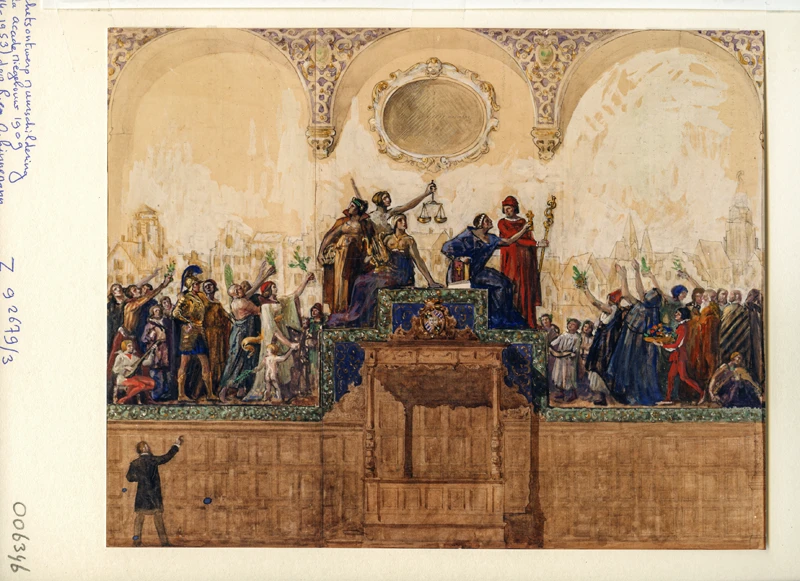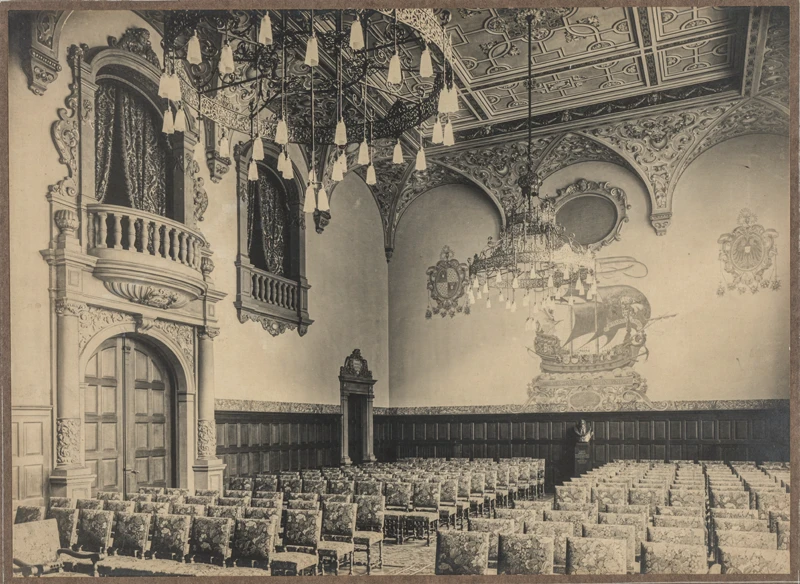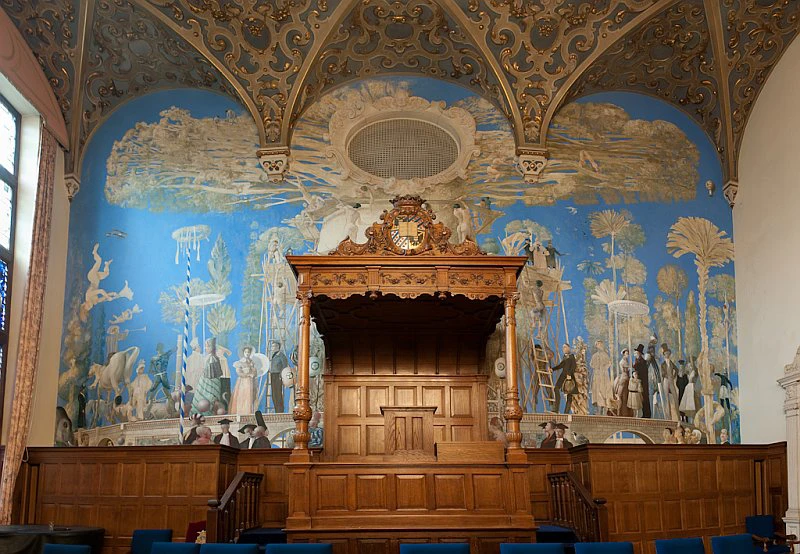waybackmachine
The AuditoriumMinerva had to make way for a double-decker bus
We don’t think anyone will regret that they no longer have to look at this profaned city at the Academy building’, said rector magnificus Beekhuis when he announced plans for the Auditorium’s renovation in 1953. The old-fashioned, mouldy mural that professors had hated for forty years was finally being replaced.

In February 1914, all hell broke loose at the university. According to an article in the Nieuwe Rotterdamsche Courant, the German Linnemann brothers were working on a mural in the Academy building’s Auditorium. Not just any mural: it was going to be an allegorical depiction of the ‘triumph of science’.
Some Groningen professors just abhorred the idea. Was there any way this could be prevented? asked famous historian Johan Huizinga. ‘When the mural is revealed’, he predicted, ‘people will laugh in derision.’ Worse, the mural wasn’t even being painted by a Dutchman.
The fact that the university’s custodians hadn’t even consulted any professors before commissioning such a mediocre and old-fashioned mural seriously bothered him and several other professors and art experts.

The painters had been the subject of controversy before. In 1914, the university wanted to decorate the recently constructed Academy building. They wanted to start with a memorial stained-glass window. This was made possible when an anonymous benefactor donated a thousand euros and the municipality and the province added another eight thousand euros to this.
The university organised an international competition, which was won by two brothers from Frankfurt: Rudolf and Otto Linnemann. Many people were upset about this; they wanted the public funds to go to a Dutch artist. The design, which included Ubbo Emmius and the five other ‘first’ professors, with allegorical figures and models of the previous three Academy buildings at their feet, also drew ire. The Nieuwe Rotterdamsche Courant called it an ‘inartistic and superficial compromise’.
The brothers were then commissioned to make six more side windows, and without informing anyone, the university also hired them to paint a mural. A large group of Groningen professors was outraged. The debate even made it to the Upper House. The Nieuwe Rotterdamsche Courant even referred to the mural as ‘a crime’ and ‘philistine’.
But the protests were all for naught. The mural was a fact; it would depict the faculties and Minerva, the goddess of science, on the pulpit, with the Groningen population cheering on the exalted university.
The mural stayed in place until 1953, until it was so decayed from damp and mould that the wall was painted white.

In the eighties, there was brief talk of restoring the mural. However, an inspection of the wall revealed this would be impossible. But there was the option of painting a new mural.
Then rector magnificus Eric Bleumink and art historian Henk van Os championed the idea and the university commissioned two renowned painters, Matthijs Röling and Wout Muller, while the UG’s Representation Funds footed the bill.
The ‘Boom der Kennis’ (Tree of Knowledge) was revealed on June 12, 1987. It’s a lot less stodgy than its predecessor: it shows people on stilts and Japanese lanterns, and a double-decker bus can be seen flying through the air.
The figure in the bottom right is mural champion Henk van Os. Next to his is former professor Bert Röling, who just so happens to be artist Matthijs Röling’s father.
This is the last article in the series – for now. The Wayback Machine will return after the summer.